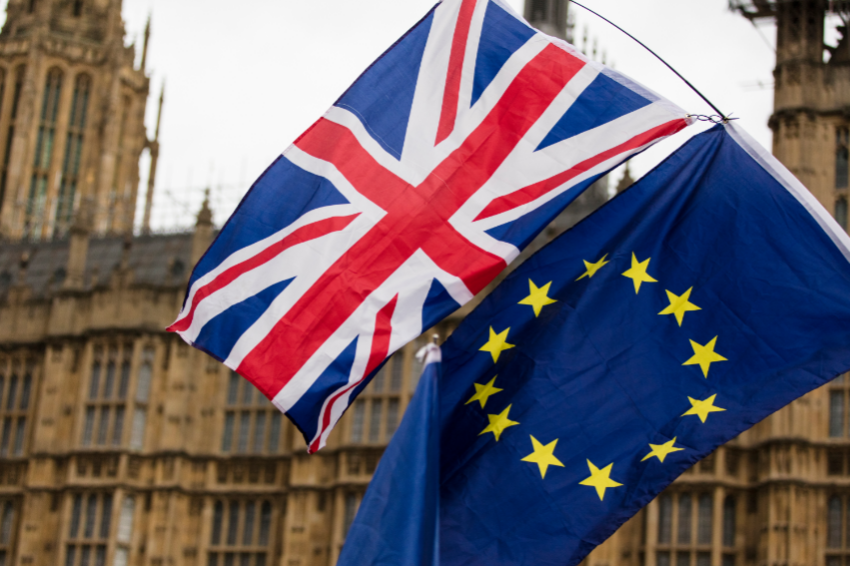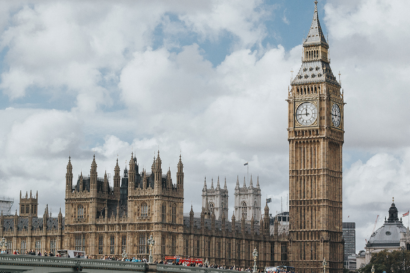AG INSIGHT | 16/05/2025
Here comes the Summit – the 19th May is a landmark opportunity for EU-UK trade and carbon collaboration

Aldersgate Group’s Senior Policy Officer Beth Barker discusses how the upcoming EU-UK Summit provides a critical moment to strengthen cooperation on carbon markets, reduce administrative burdens and boost investment in low-carbon industries, as businesses push for linkage between emissions trading schemes to drive long-term competitiveness and clean growth.
The EU-UK Summit on the 19th of May is being touted as a wide-ranging relationship reset. In an uncertain world, more than ever, businesses are looking for clarity from governments. With cooperation on carbon emissions on the agenda, the UK government and EU have an opportunity to streamline trade, support policy certainty, and create a fairer regulatory environment. All of this is fundamental to unlocking the investment that can accelerate low-carbon growth.
The policy background
The UK government has rightly placed industrial sectors and the energy transition at the heart of its growth strategy. The UK is in the midst of a global race to secure investment in clean industries, and businesses are well-placed to seize this opportunity and take the lead.
Between 2023-24, the UK’s net zero economy grew by 10.1%, and jobs in the sector generated 38% more economic value than the UK average. From cement and steel to advanced manufacturing and clean energy, the UK has the chance to supercharge growth by developing a competitive advantage in low-carbon production. However, businesses need policy and regulatory frameworks to enable this low-carbon growth.
The opportunities ahead
The upcoming EU-UK Summit on 19th May is an important moment to deliver greater cooperation and support for this aim. The current separation of EU and UK emissions trading schemes (ETS) creates additional administrative burden for businesses operating in both jurisdictions, and the upcoming introduction of respective Carbon Border Adjustment Mechanisms (CBAMs) risks introducing another burden if not implemented effectively. Due to its small size, the UK ETS faces liquidity challenges and a lower carbon price. The existence of separate schemes also puts the UK at risk of dumping from other high-carbon producers, in the event that the EU introduces schemes or changes earlier than the UK.
Further low-carbon industrial growth will depend on both robust domestic policy and constructive collaboration with the EU, the UK’s largest trading partner. In 2023, seven of the UK’s top ten export markets were EU member states, with the EU accounting for 41% of total UK exports. Businesses on both sides of the channel have expressed emphatic enthusiasm for linkage. The UK carbon market is about ten times smaller than the EU and linked Swiss ETS. Aligning carbon markets would strengthen the UK’s carbon price signal, stabilise our smaller, more volatile ETS, and drive long-term investment. For both EU and UK businesses, linkage would level the playing field, avoid competitive distortions, lower the costs of transitioning to low-carbon production and save participation costs. Linkage is projected to lower transaction costs for EU and UK participants, yielding estimated savings of around €770 million between 2026 and 2030.
Linkage would allow for mutual exemptions from the EU and UK’s respective CBAMs. There are specific benefits for electricity markets, which taken alone are a huge incentive for action. Electricity is covered by the EU CBAM. Under current arrangements, this creates huge uncertainty, with potential costs and negative implications for electricity market corporation around the North Sea and between Northern Ireland and the Republic of Ireland. Resolving these issues with improved cooperation would support energy security and help drive investment into the North Sea transition, benefiting both the UK and EU member states.
Inaction could lead to a significant impact on the economy. Analysis from Frontier Economics has found that a persistent UK ETS discount relative to the EU ETS could lead to UK exporters paying CBAM charges of up to £800m into the EU budget by 2030. Major trade groups have made clear the importance of decisive measures to address this, Energy UK is urging a swift negotiation before the schemes diverge further and the costs of the EU CBAM hits UK businesses.
Linkage is achievable and can be negotiated independently of the Trade and Cooperation Agreement. It would not require rejoining an EU institution. Analysis undertaken by Herbert Smith found that ETS linkage was legally and technically straightforward. However, the government will need to address concerns, shared by some UK businesses, around the higher carbon price ETS linkage would bring, particularly in the context of high UK energy prices. While a short-term carbon price increase is possible, carbon prices are expected to converge as the UK ETS tightens from 2027. But there are also benefits to be secured: a high UK carbon price will increase the UK government’s ETS revenue, which could be reinvested into support for industrial decarbonisation. Frontier Economics have estimated that a persistent UK carbon price discount would result in £3.5-8bn in revenue being missed out on over 2025-2030. The government must provide wider support for decarbonisation, whilst ensuring the ETS can fulfil its purpose of driving decarbonisation through an appropriate carbon price.
In the face of global trade uncertainty, wider economic challenges, and rising temperatures, the UK should seek international collaboration and cooperation. The UK and EU already share the same goal: future-proofing our economies through clean growth. While there are many issues to be discussed on 19th May “to foster a stable, positive and forward-looking relationship”, there is no doubt that linking carbon markets has strong business and political backing, and can deliver tangible benefits for us all.



